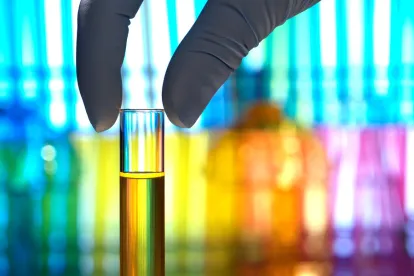In Mallinckrodt Hospital Prods. IP Ltd. v. Praxair Distrib., Inc., Judge Sleet of the U.S. District Court for the District of Delaware invalidated personalized method of treatment claims under 35 USC § 101 as being directed to a natural phenomenon. If the Federal Circuit affirms the decision, will it leave room to draw a line that spares other methods of treatment?
The INOMax® Patents At Issue
The underlying ANDA litigation involved a number of Orange Book-listed patents for INOMax®, a nitric oxide delivery system indicated for use to improve oxygenation and reduce the need for extracorporeal membrane oxygenation in neonatal patients with hypoxic respiratory failure associated with clinical or echocardiographic evidence of pulmonary hypertension. Judge Sleet cited claim 1 of U.S. Patent No. 8,795,741 as representative:
1. A method of treating patients who are candidates for inhaled nitric oxide treatment, which method reduces the risk that inhalation of nitric oxide gas will induce an increase in pulmonary capillary wedge pressure (PCWP) leading to pulmonary edema in neonatal patients with hypoxic respiratory failure, the method comprising:
(a) identifying a plurality of term or near-term neonatal patients who have hypoxic respiratory failure and are candidates for 20 ppm inhaled nitric oxide treatment;
(b) determining that a first patient of the plurality does not have left ventricular dysfunction;
(c) determining that a second patient of the plurality has left ventricular dysfunction, so is at particular risk of increased PCWP leading to pulmonary edema upon treatment with inhaled nitric oxide;
(d) administering 20 ppm inhaled nitric oxide treatment to the first patient; and
(e) excluding the second patient from treatment with inhaled nitric oxide, based on the determination that the second patient has left ventricular dysfunction, so is at particular risk of increased PCWP leading to pulmonary edema upon treatment with inhaled nitric oxide.
The Patent Eligibility Analysis
As summarized in Judge Sleet’s memorandum opinion, the patent owner argued that the claims “disclose patent-eligible subject matter because they recite a new way to use an existing drug—administering iNO in such a way that neonates or children with LVD are at a reduced risk of pulmonary edema or other [adverse events].”
Conducting step 1 of the Mayo/Alice analytical framework, the district court determined:
[T]he core of the alleged invention is the increased risk of pulmonary-capillary wedge pressure that develops when administering iNO to term or near-term patients with both hypoxic respiratory failure and left-ventricular dysfunction. …. That “invention” is really a patient populations’ natural physiological response to 20 ppm of inhaled nitric oxide treatment. While man discovered the adverse physiological response that occurs when some patients receive iNO, such a discovery does not amount to innovation.
Conducting step 2 of the Mayo/Alice framework, the district court determined that all steps either were routine and conventional (steps (a), (b) and (d)) or did not transform the claim into patent-eligible subject matter (step (c). With regard to step (e), the court stated:
The natural phenomenon is that some patients with preexisting LVD have a negative reaction to treatment. Plaintiffs cannot seriously contend that it is a new practice to exclude certain patients from treatment with a drug when those patients are at an increased risk of experiencing negative side effects from the drug.
The court also found similarities between the claims at issue and those invalidated by the Supreme Court in Mayo and by the Federal Circuit in Cleveland Clinic.
The court concluded:
[T]he HF claims are not directed to a new way to use an existing drug. Instead, the claims are directed to a conventional response to the discovery of a serious adverse event. The method offers no innovation or improvement over the prior art outside of the novel realization that patients with LVD should not receive iNO treatment because their bodies respond to that treatment in a way that increases their risk of pulmonary edema. While that realization may be valuable, it is not worthy of patent protection.
What Will The CAFC Do?
Although the district court referred to the Federal Circuit decision in Cleveland Clinic, the claims invalidated in that case were diagnostic claims, not therapeutic method claims. While I would like to predict that the Federal Circuit would not invalidate a method of treatment claim under § 101, Judge Sleet’s analysis highlights the slippery slope presented by the “natural phenomenon” paradigm. The judge characterized the claimed invention as “a patient populations’ natural physiological response to 20 ppm of inhaled nitric oxide treatment.”—couldn’t the same be said about any therapeutic method of treatment?




 />i
/>i
